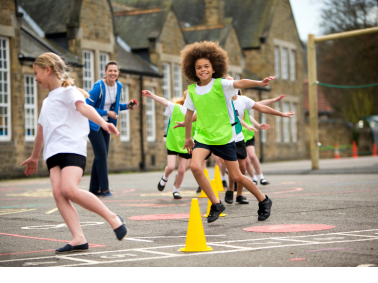Safeguarding in schools refers to the institution’s responsibility to keep children safe from harm and abuse while they are in the school’s care. This involves creating a secure learning environment, identifying students who may be at risk, and taking appropriate action to protect them. Everyone working in a school, whether they interact with children regularly or not, plays a role in ensuring their safety. A child-centred approach, where decisions are made with the child’s best interests in mind, is crucial for effective safeguarding.
Schools must have designated staff members responsible for managing safeguarding matters. They need clear procedures for staff to follow if they are concerned about a child’s welfare. Additionally, all school staff should be trained to recognise signs of abuse and know how to act on any concerns they might have. Safeguarding also extends to teaching children how to protect themselves, which is often covered in personal, social, and health education (PSHE) lessons. These lessons address risky behaviours, safe physical contact, internet safety, and peer pressure.
The Importance of Safeguarding in Schools
The rise in severe child harm cases during the COVID-19 pandemic highlights the crucial role schools play in safeguarding children. In England, serious incident reports increased by 19% during the first year of the pandemic. Schools often serve as the first line of defence in identifying signs of abuse or neglect. With the closure of schools during lockdowns, many safeguarding concerns went unnoticed.
Teachers and school staff have a unique perspective on a child’s development and behaviour, which allows them to notice signs of abuse more readily. Whether the abuse is physical, emotional, or psychological, schools can provide a safe space for children to seek help and protection. Effective school safeguarding practices help ensure children are safe, supported, and allowed to thrive.
What is a Safeguarding Policy in Schools?
A school safeguarding policy is a formal document outlining the procedures and systems to protect children from harm. It must comply with government guidelines and be updated annually. The policy should include information on staff conduct, particularly regarding student relationships and communication, including the use of social media. All school staff, including temporary employees and volunteers, must be familiar with the safeguarding policy from the moment they are hired.
Every school should have a designated safeguarding lead, who is responsible for guiding staff on safeguarding issues and coordinating with outside services, such as children’s social care. Schools should also ensure they have enough staff trained to cover safeguarding duties at all times.
Safeguarding Training in Schools
Safeguarding training is essential for all school staff. The designated safeguarding lead must undergo specialised training every two years. All other staff, including teachers, volunteers, and non-teaching staff, should receive safeguarding training when they join the school and at least once every three years. However, best practice suggests that training should be refreshed annually. Senior staff, governors, and interview panel members should also complete safer recruitment courses to ensure that the right procedures are followed when hiring new staff.
Contextual Safeguarding in Schools
Contextual safeguarding focuses on understanding and responding to the potential harm children and young people may face outside their homes. It recognises that schools, communities, and online environments play a role in a child’s life that can sometimes lead to harm or exploitation. This approach is crucial because parents may have little control over what happens outside the home. Schools, therefore, have a duty to recognise these risks and intervene when necessary.
Schools should consider the specific risks children might face in their environment and work to mitigate them. For example, schools should look out for signs of gang involvement, substance abuse, or other dangerous behaviours. Contextual safeguarding means considering these external influences when identifying, assessing, and responding to concerns.
What Does Effective Safeguarding Look Like in Schools?
Child protection is embedded in every aspect of the institution’s operations in schools with outstanding safeguarding practices. This includes strong leadership prioritising safeguarding, precise and updated policies, and excellent communication between staff, students, and parents. Schools should also ensure that site security, risk assessments, and day-to-day operations are all designed with the safety of students in mind.
Teachers and staff must know who to talk to if they have concerns about a child, and children should also feel comfortable seeking help if they need it. In addition, schools should have a curriculum that teaches students how to protect themselves and stay safe, whether online or in real life.
Multi-Agency Safeguarding Systems
Schools are part of a broader safeguarding system that involves various agencies working together to protect children. These include social care, police, health services, and local authorities. A Multi-Agency Safeguarding Hub (MASH) often coordinates this system, providing a single point of contact for professionals to report safeguarding concerns. When a school reports a concern, the MASH team gathers information from partner agencies and decides on the best action to protect the child.
Schools can also consult with MASH social workers to discuss concerns and determine whether further action is necessary. This collaborative approach ensures that all available resources are used to support vulnerable children and keep them safe.



